Montreal legend Artie Gold published only two books after his great outburst of creativity in 1974–79, and one of those was made up of poetry from the late 1970s; a big collection of his work is very welcome. Sadly, The Collected Books of Artie Gold is a posthumous compilation, as Gold died on Valentine’s Day, 2007, after years of debilitating respiratory illness.
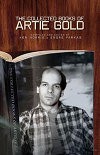
The Collected Books Of Artie Gold
Artie Gold
Talonbooks
$29.95
paper
304pp
9780889226524
Gold was heavily influenced by two Americans, Frank O’Hara and Jack Spicer, and there are whispers of Leonard Cohen in his work. His first book was completely derivative, but he quickly assimilated the American voices. Gold’s poems are protean: he can be delicate and gross, and his imagination thrives on daily life (as in the “I do this I do that” poems of his beloved O’Hara), but has a mythological reach as well. In the middle of the book are two amusing changes of pace: a set of poems about jockeys that take the visual form of horse-and- jockey, and a group of poems about his cherished cats. It is time for a good assessment of this writer – he shouldn’t remain merely a legendary figure – and The Collected Books will make such a valuation easier.
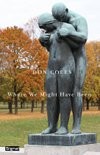
Where We Might Have Been
Don Coles
Signal Editions
$18.00
paper
55pp
9781550652945
on Coles has been a steady writer and a much honoured one, but the garrulous memory poems in
Where We Might Have Been will not enhance his reputation as a poet. The recollections are not extraordinary, and the tone is smug and whimsical (he decides not to tell a story, then tells it in a footnote, and then says, “See? Not worth your time”). The nudging asides and words in quotations marks become tiresome. His poems about Albert Camus, Art Buchwald, and Charles Ritchie are just exercises in name-dropping, excuses to bring in his own memories, to little effect. Two poems stand out: One, “
Liebespaar vor Dresden,” is about a couple who posed for a painting in Dresden in 1928, and ends with the melancholy question: did they die in the firestorm created by Allied bombers in 1944? The other, “Proust and My Grandfather (and Eaton’s, God Rot Them),” uses a passage from Proust to summon up memories of being offered a pear by the grandfather. The pear is a memory trigger like Proust’s famous madeleine. However, most of the poems in
Where We Might Have Been show that not every morsel offered by memory is worth nibbling.
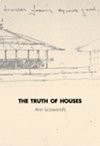
The Truth Of Houses
Ann Scowcroft
Brick Books
$19.00
paper
104pp
978196829678
he core of Ann Scowcroft’s first book,
The Truth of Houses, is a sequence built on memories, none of them trivial. The set is called “(Palimpsest),” and the parentheses call attention to the nature of a palimpsest, a text written over erased texts. In this case, the “text” is a set of memories of childhood sexual abuse over two generations. This is no longer unusual material, but Scowcroft imprints the recovered memories on us in two ways: through a fractured time scheme that makes us decipher the events as memory recovers them, and through references to brain structures and their functions, like the hippocampus, the amygdala, and Broca’s area. Describing body states is a powerful means of conveying emotion, and evoking brain function is an extension of the method. As Faulkner says in
Light in August, “memory believes before knowing remembers.” In another sequence, “Selected excerpts from the atlas of desire,” the poet conveys emotions by describing the formation of sounds in the mouth: she is a specialist in Applied Linguistics. This book needed more editing: the best poems at the heart of it are flanked by rather sentimental works about family life that do not have the same impact.
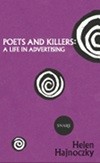
Poets And Killers
Helen Hajnoczky
Snare Books
$12.00
paper
88pp
9780981248875
elen Hajnoczky’s first collection
Poets and Killers, is high concept poetry. Her plan was to satirize advertising by imagining the life of an advertising man (1940 –2010) and narrating his story though lines taken from ads. Unfortunately, the found material is not very interesting, nothing on the level of the witty Vancouver magazine
Adbusters. The poems are followed by an explanatory essay to make sure that we get it. An episode of the television series
Mad Men offers more insight into advertising, without the preachiness.
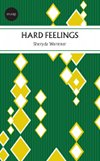
Hard Feelings
Sheryda Warrener
Snare Books
$12.00
paper
88pp
9780981248899
heryda Warrener’s
Hard Feelings, from the same small press, is a far better book. Warrener has written a formally varied collection – in this debut, she uses prose poems, a pantoum, a ghazal, and, most interestingly, a long poem in prose about Georgia O’Keeffe, with italicized quotations from the famous painter inserted in spaces at the right-hand side of the page. Her long sequence on a family breakup puts passages about later lives of the father and mother on facing pages – with some interpolated comments by their child: narrative and commentary work well together. The travel poems, which have a whole section, combine crisp description with a lyrical tone: she avoids guide- book reductionism. It’s amusing to find a poem about Grimsby, Ontario, sandwiched between works on Barcelona and Yamanaka-ko.
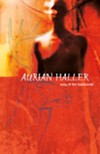
Song Of The Taxidermist
Aurian Haller
Goose Lane
$17.95
paper
80pp
9780864926494
axidermy is the unlikely focus of Aurian Haller’s outstanding collection,
Song of the Taxidermist. The eight-part title-poem, which opens the book (“Song of the Taxidermist II” closes it), sometimes looks at taxidermy, sometimes at things that are preserved, like Togo, a dog that took part in the famous mission to bring serum from Anchorage to Nome in 1925. Haller uses couplets that are as sharp as a scalpel to present his subjects, and his lyrical tact is superb. To choose one example, “Novecento, Maurizio Cattelan, 1997. Horse in taxidermy with sling” ends with a fine metaphor, “See, even the moon is / a hoofprint on the darkening shore.” Haller’s description of the creations of taxidermy is essentially a variant on that popular form of our time, the ekphrasis, a poem describing a work of art. The book has seven poems based on paintings of Betty Goodwin, and there are others that describe rocking horses, with pictures of the horses provided in the text. Haller’s intellectual brilliance is made clear by his poems about the nature of language, gathered wittily as “Speechless”: another set of poems in precise couplets. Cleverness does not trump feeling in the book: the reader never knows when a descriptive poem will open vistas of terror or create pathos (as in the poems gathered as “Five Drownings”). He may go too far with a poem in which a man kills kittens by dropping them in boiling water: “He spoons them one by one / like blind dumplings / into soup.”
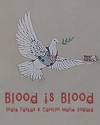
Blood Is Blood
Endre Farkas and Carolyn Marie Souaid
Signature Edition
$19.95
paper
48pp
1897109466
ndre Farkas and Carolyn Marie Souaid have prepared a DVD and book that remind us that Arabs and Jews are both Semites, and that, as in the Yin and Yang symbol, each zone of interacting black or white has a dot of the opposite colour at the heart of it. Farkas is a Hungarian immigrant, the child of Holocaust survivors. Souaid has Lebanese Arab ancestry – Christian rather than Muslim. Their work juxtaposes a series of statements by “Jew” with statements by “Arab,” printed on facing pages and exploiting parallelism and contrast. The best pair of statements contrasts the Jew’s ideas for whimsical Passover games (use marshmallows to simulate the Plague of Hail!) with a long list of Wartime Emergency Provisions by the Arab. The horror of stockpiling for war reminds us of the emergency that Passover commemorates: how deeply conflict is embedded in the Middle East. Vituperation and recriminations eventually give way to statements of love (treasonous though they might be, ideologically) and to a celebration of Arab and Jew sitting on their balconies and enjoying the same evening, something like the Biblical image of Everyman sitting under his own fig tree.
The real impact of the work is in the “video-poem” on the DVD, which the reader should play before reading the book. Shot mostly in black and white by the talented videographer Martin Reisch, the film provides a backdrop of relevant images as the poets read the text. There is an informative website for the project at www.bloodisblood.com.
The poem ends ambiguously with en face lines that say, “Let us take an eye for an eye till everyone is blind,” which is perhaps a variation on the saying attributed to Mahatma Gandhi, “an eye for an eye leaves everyone blind.” Souaid and Farkas provide us with a grim reminder of vengeful elements in Mosaic and Sharia law, but they also imply that revenge might exhaust itself into tolerance, that survivors might become blind to differences. mRb













0 Comments